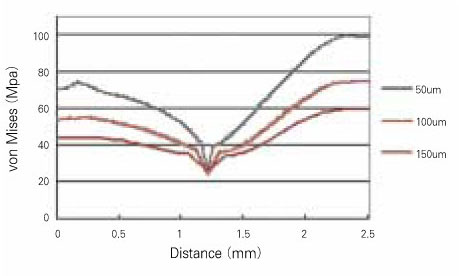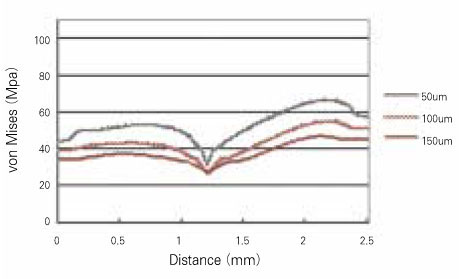References
1. Grippo JO. Abfractions : a new classification of hard tissue lesions of teeth. J Esthet Dent 1991. 314–19.
2. Heymann HO. Examining tooth flexure effects. JADA 1991. 12241–47.
3. Lee WC, Eakle WS. Possible role of tensile stress in the etiology of cervical erosive lesions of teeth. J Prosthet Dent 1984. 52374–380.
4. Stewart GP, Balda BA, Norman RD. The effects of mechanical loading on marginal integrity of composite restorations. Dent Mater 1986. 2151–152.
5. Sturdevant JR, Lundeen TF, Sluder TB, Leinfelder KF. Three-year study of two light-cured posterior composite resins. Dent Mater 1986. 2263–268.
6. McCoy RB, Anderson MH, Lepe X, Jonson GH. Clinical success of class V composite resin restorations without mechanical retention. JADA 1998. 129593–599.
7. Mattison GD. Photoelastic stress analysis of cast gold endodontic posts. J Prosthet Dent 1982. 48407–411.
8. Assif D, Oren E, Marshak BL, Aviv I. Photoelastic analysis of stress transfer by endodontically treated teeth to the supporting structures using different restorative technique. J Prosthet Dent 1989. 61535–543.
9. Kuroe T, Itoh H, Caputo AA, Konuma M. Biomechanincs of cervical tooth structure lesions and their restoration. Quintessence Int 2000. 31267–274.
10. Um CM, Kwon HC, Son HH, Cho BH, Rim YI. Finite element analysis of stress distribution according to cavity design of class v composite resin filling. J Korean Acad Conserv Dent 1999. 2467–75.
11. Turner MJ, Clough RW, Martin HC, Topp LJ. Stiffness and deflection analysis of complex structure. J Aero Sci 1956. 23805–823.
12. Ausiello P, Apicella A, Davidson CL. Effect of adhesive layer properties on stress distribution in composite restorations-a 3D finite element analysis. Dent Mater 2002. 18295–303.
13. Rees JS. The effect of variation in occlusal loading on the development of abfraction lesions : a finite element study. J Oral Rehabil 2002. 29188–193.
14. Yaman SD, Sahin M, Aydin C. Finite element analysis of strength characteristics of various resin based restorative materials in class V cavities. J Oral Rehabil 2003. 30630–641.
15. Chon CS, Kim HS, Shim JS, Kim YH. Finite element knalysis for elastic modulus of the periodontal ligament in premolar regions. J Korean Soc Precision Eng 2005. 22202–209.
16. Van Meerbeek B, Willems G, Celis JP, Roos JR, Braem M, Lambrechts P, Vanherle G. Assesment by nano-indentation of the hardness and elasticity of the resin-dentin bonding area. J Dent Res 1993. 721434–1442.
17. Moon PC, Chang YH. Effect of DBA layer thickness on composite resin shrinkage stress. J Dent Res 1992. 71275–283.
18. Choi KK, Cordon JR, Ferracane JL. The effects of adhesive thickness on polymerization contraction stress of composite. J Dent Res 2000. 79812–817.
19. Peter A, Paul SJ, Luthy H, Scharer P. Film thickness of various dentin bonding agents. J Oral Rehabil 1997. 24568–573.
20. Cho BH, Yoo HM, Kim DH. Two-dimensional finite element analysis on the effect of interface condition and retention groove in class v composite resin restoration. J Korean Acad Conserv Dent 1998. 23639–646.
21. Rees JS. Abfraction lesion formation in maxillary incisors, canines and premolars: A finite element study. Eur J Oral Sci 2003. 111149–154.
22. Widmalm SE, Ericsson SG. Maximal bite force with centric and eccentric load. J Oral Rehabil 1982. 9445–450.
23. Gibbs CH, Mahan PE, Lundeen HC, Brehnan K, Walsh EK, Holbrook WB. Occlusal force during chewing and swallowing as measured by sound transmission. J Prosthet Dent 1981. 46443–449.








